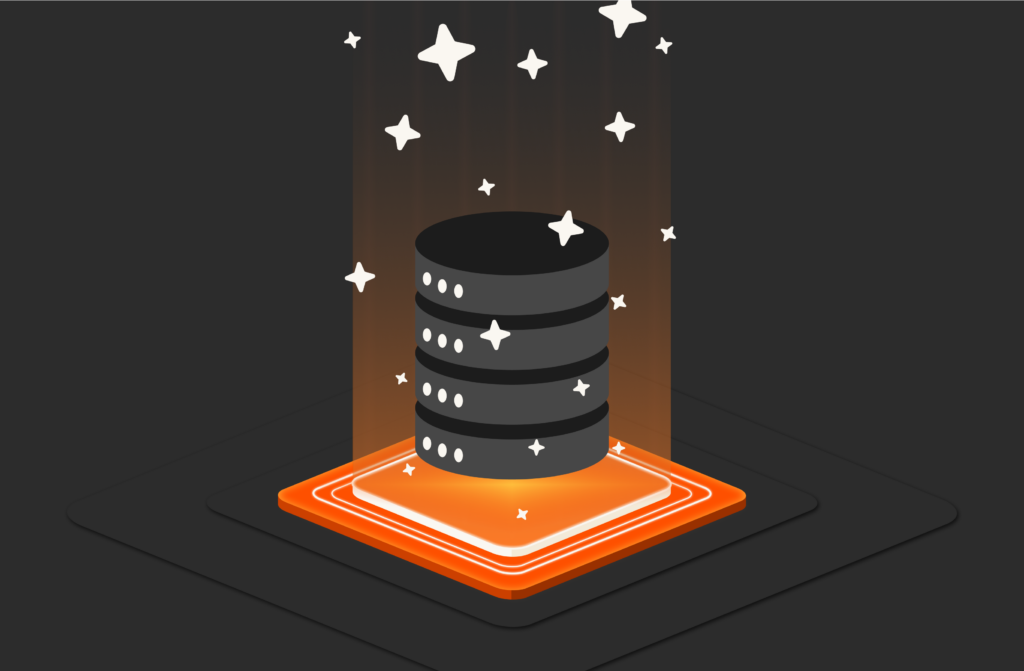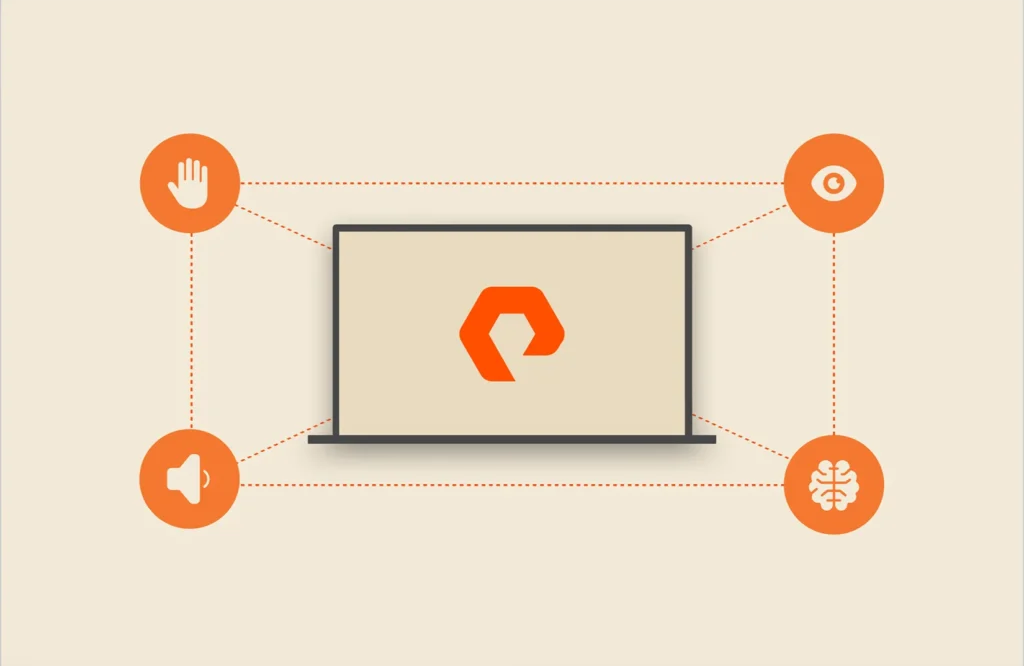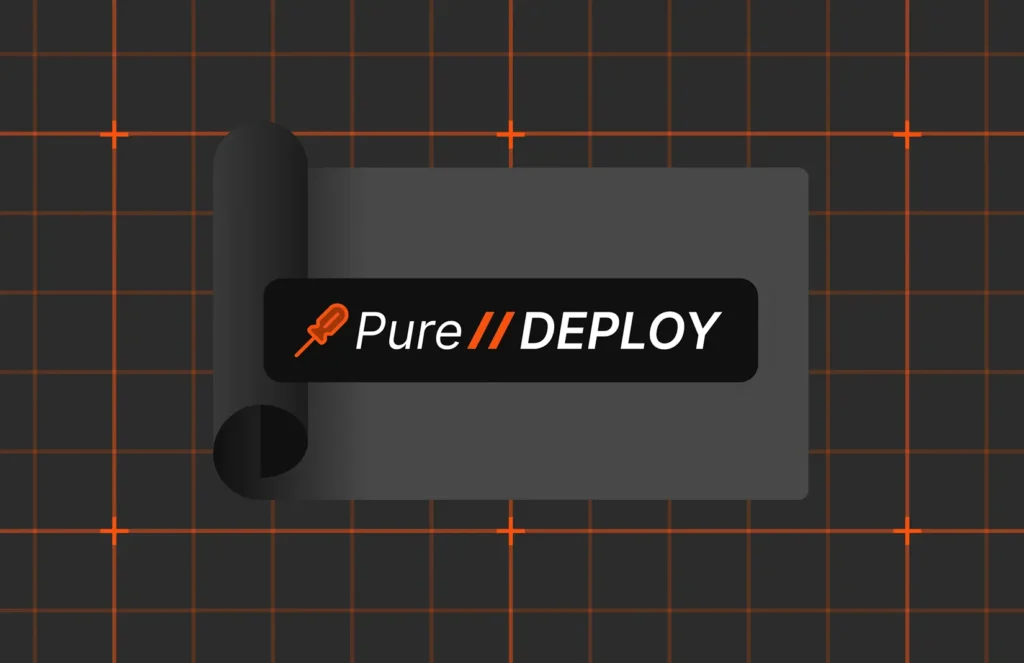Summary
While NetApp continues to sing the praises of legacy tech, Pure Storage has taken a fundamentally different approach with our DirectFlash Modules (DFMs), offering an engineered storage system designed for the modern data center.
In enterprise storage, technical debt doesn’t just slow you down—it defines your ceiling. NetApp’s recent blog post, “Direct Flash vs. SSD,” argues that standard SSDs managed by ONTAP are “good enough.” But in the NVMe era, “good enough” isn’t good enough. Pure Storage® DirectFlash® Modules (DFMs) aren’t incremental improvements—they are an architectural overhaul. Here’s a surgical breakdown of NetApp’s claims, backed by engineering facts.
1. Performance and Latency: Firmware Overhead vs. Software-defined Flash
NetApp says: Mature SSD firmware outperforms custom flash modules.
Reality: DFMs eliminate the flash translation layer (FTL), bypassing SSD controller abstractions entirely. Instead, the Purity OS manages NAND placement, garbage collection, and wear-leveling directly. This yields:
- Sub-250μs latency (compared to 300–500μs for ONTAP-managed SSDs under ideal conditions, and higher under write amplification or mixed IO patterns)
- Consistent latency under mixed IO workloads due to software-coordinated NAND operations
- IOPS tuned for system-level predictability—while off-the-shelf SSDs may advertise higher raw IOPS, DFMs optimize end-to-end throughput with deterministic latency and consistent performance across workloads, avoiding the variable behavior seen with flash translation layers and background operations
ONTAP still relies on drive-managed FTLs that are optimized for broad compatibility, not workload-specific behavior. The result? Inconsistent latency, unpredictable pauses, and firmware-induced bottlenecks.
2. Reliability: Workload-tailored Flash Management
NetApp says: SSDs are more reliable thanks to established firmware techniques.
Reality: DFMs offload reliability mechanisms like wear-leveling and block health tracking to Purity, which has global visibility into system IO patterns. This enables:
- 2.5x better media endurance due to fine-tuned write amplification control
- Smarter garbage collection tuned to application-level behavior
- Predictable behavior without firmware black-box heuristics
SSD firmware still operates at the component level, using overprovisioning and generic logic to mask flash limitations. While this extends endurance, it often does so inefficiently and without insight into system-wide IO patterns. The result is unpredictable latency and behavior under mixed workloads. In contrast, Pure Storage DFMs shift flash management to the Purity OS, which maintains global visibility and control—enabling coordinated flash handling, deterministic latency, and enterprise-grade fault tolerance across the system. That’s not just macro-level protection; it’s engineered predictability.
3. Power Efficiency: Less Abstraction, More Efficiency
NetApp says: SSDs are efficient enough, and there’s no advantage to DirectFlash in this area.
Reality: DFMs achieve superior power efficiency not because the hardware is different—but because the software is smarter. By shifting flash management from embedded drive firmware to the Purity OS, DFMs eliminate redundant processes like onboard garbage collection, FTL-induced metadata lookups, and controller overhead. This streamlined, software-defined model enables:
- Up to 30% lower power consumption per terabyte
- Reduced thermal load and improved rack-level power efficiency
- Elimination of per-drive DRAM/controller cycles that don’t contribute to real-world IO performance
- Simplified power provisioning and cooling for dense deployments, with thermal headroom that supports higher rack density
Larger-capacity DFMs also increase power efficiency per TB. With individual modules available at 150TB and scaling to 300TB, DFMs deliver dramatically higher density per module than NetApp’s 61.44TB SSDs—reducing the total number of devices required, which further compounds rack-level power and cooling savings.
SSD power consumption is influenced not just by the amount of flash capacity, but by the overhead of onboard processing—including controller logic, FTLs, and DRAM refresh cycles—all of which operate independently from the storage system and introduce inefficiencies.
4. Density: A Purpose-built Flash Footprint
NetApp says: SSDs offer higher density.
Reality: NetApp claims better density, but DFMs deliver more usable flash per RU by scaling up to 150TB (300TB announced) per module—versus 61.44TB SSDs. With fewer devices and less overhead, DFMs simplify scaling and reduce footprint at the rack level.
- Up to 2x the usable density per RU compared to shelf-based SSD enclosures
- Current DFM capacity: 150TB per module, with a 300TB model announced, versus NetApp’s newly available 61.44TB NVMe SSDs
- DirectFlash Shelf architecture enables disaggregated capacity scaling without legacy bottlenecks
NetApp shelves use standard NVMe SSDs—up to 61.44TB—managed by ONTAP. But flash behavior is dictated by individual SSD firmware, not the storage OS. In contrast, Pure Storage DFMs shift flash control to the Purity OS, enabling global coordination of IO, wear leveling, and garbage collection.
Why it matters: With NetApp, drive firmware adds variability under load—especially during background tasks. Pure Storage eliminates these bottlenecks, delivering more predictable performance, faster applications, and simpler operations.
5. “Proprietary” vs. Precision Engineering
NetApp says: DFMs are proprietary and lock customers in.
Reality: Integration isn’t lock-in—it’s architecture done right. Pure Storage DFMs are co-engineered with Purity to optimize the entire flash stack:
- Telemetry-driven flash management: The Purity OS controls write placement, garbage collection, and data layout at a system-wide level—not blindly at the drive level.
- Unified firmware/software lifecycle: Fewer moving parts, fewer edge cases. This integration reduces upgrade risk and eliminates inconsistencies common in SSD firmware.
- Simplified, resilient firmware design: With no dependency on third-party SSD microcode, DFMs are less complex and more stable, resulting in fewer bugs and regressions.
NetApp, meanwhile, must support and integrate drives with third-party firmware—firmware it doesn’t control. That means unpredictable bugs, performance tuning headaches, and risk during every code update. With Pure Storage, software and media evolve together—delivering transparency, determinism, and operational consistency.
6. Metadata: The Pure Storage Hierarchical Engine vs. WAFL’s Legacy
“Purity organizes and places metadata at multiple tiers of memory and storage to ensure consistent low latency at scale.”
– “Better Science, Vol. 2”
The Pure Storage Metadata Pyramid leverages:
- SRAM and DRAM for hot metadata
- NVRAM for in-flight journaling
- Optimized SSD layout for cold but frequently read maps
ONTAP’s WAFL architecture, while powerful for its time, was designed around spinning disks. Its copy-on-write metadata model introduces IO amplification by writing new blocks and updating pointers instead of modifying data in place. This behavior can result in latency spikes during metadata-intensive operations such as snapshot creation or deletion, rebuilds, and metadata reorganization. For customers, this means more tuning and less predictability—especially at scale and under mixed workload conditions.
7. Investment Protection and Simplicity
NetApp says: ONTAP and SSDs offer superior investment protection and simplicity through flexible media options.
Reality: Pure Storage Evergreen architecture delivers true investment protection through non-disruptive upgrades—both controller and media—without forklift replacements. DFMs are managed entirely by Purity, with all complexity abstracted from the user. NetApp’s flexibility still depends on drive firmware, shelf compatibility, and WAFL-era metadata structures. True simplicity comes from an integrated software-hardware lifecycle—not from swapping SSDs every three to five years.
And Pure Storage customers back that claim:
- Hyperscaler validation: Meta selected Pure Storage FlashArray™ and DirectFlash to support their mission-critical AI and analytics workloads—because when the world’s most demanding environments choose a platform, it’s no longer just a claim—it’s a standard.
- Evergreen customers: Ninety-seven percent or more of Evergreen® customers have completed at least one non-disruptive controller or media upgrade—no migrations, no re-buys, no downtime.
- Customer satisfaction: Pure Storage holds an audited NPS of 81, compared to NetApp’s historical NPS in the mid-30s to low-40s.
- Real-world example: A major SaaS provider consolidated two racks of AFF arrays into a single FlashArray//XL™ populated with DFMs—cutting power by 40% and rack space by 75%.
- Real results: ServiceNow adopted Pure Storage FlashArray to double capacity and improve availability, increasing uptime and streamlining infrastructure management.
DFMs vs. SSDs: Head-to-head Engineering Comparison
| Feature | NetApp ONTAP SSDs | Pure Storage DFMs |
| Flash Translation Layer | Present | Eliminated |
| Metadata Management | Legacy (WAFL) | Optimized (Metadata Pyramid) |
| Latency Consistency | Variable (FTL-dependent) | Deterministic |
| Overprovisioning Overhead | High | Low |
| Power Efficiency | Standard | Up to 30% better per TB |
| Rack Density | Limited | Up to 2x higher |
| Max Capacity per Module | 61.44TB | 150TB (300TB announced) |
| Reliability | FTL-dependent | 2.5x better without FTL |
| Mixed Workload Performance | Variable | Up to 50% better |
| Hardware-Software Co-Design | No | Yes |
Final Chorus: The Architecture Gap
NetApp continues to wrap aging WAFL file system logic around SSDs built for generic compatibility. Pure Storage built DirectFlash to eliminate translation layers, reduce entropy, and maximize flash economics. NetApp says this is unnecessary. We say it’s unavoidable.
DirectFlash Modules aren’t just a better flash medium—they are the backbone of an engineered storage system designed for the modern data center.
That’s not livin’ la vida loca—that’s living in the future.

The Future of Storage
Unleash the Power
of Your Data
Learn how only Pure Storage can meet your data storage needs now—and in the future.
A New Era
Learn more about our vision.







